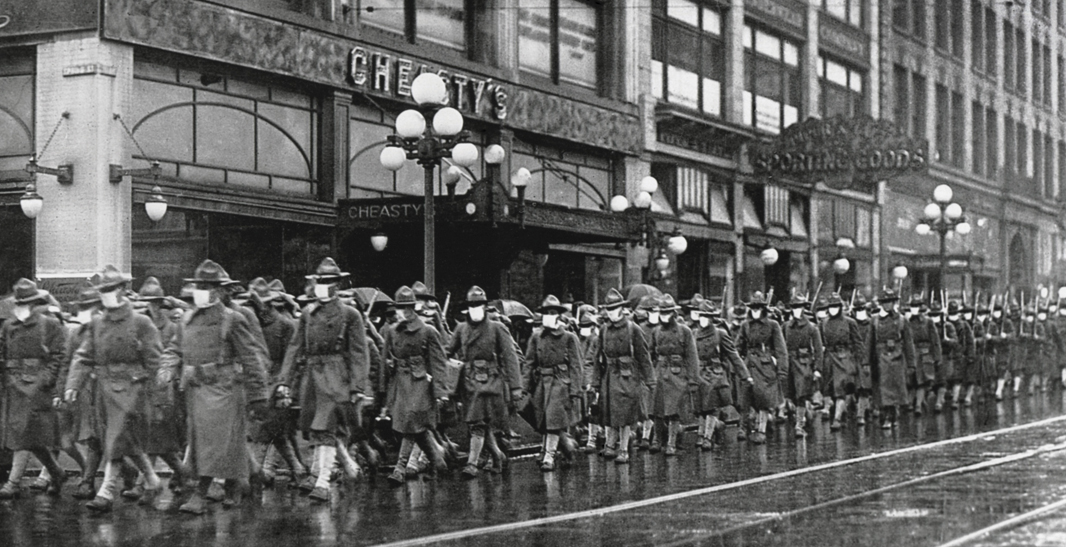Regulatory/Law
The Fire Last Time
Insurance coverage during the Spanish flu pandemic of 1918-1920 was much different than it is today.
- Stephen P. Pate
- June 2020
-






HEADING ‘OVER THERE’: Soldiers in the U.S. 39th regiment in Seattle wear masks to prevent influenza in December 1918. They were on their way to France during the Spanish influenza pandemic.
Insurance carriers are bracing for COVID-19 claims. Social media is full of information on potential coverage, yet it must be remembered that there was a previous pandemic: Spanish flu in 1918-1920. What were the coverage issues then?
Spanish flu caused almost 50 million deaths worldwide, in a world already ravaged by World War I. In the United States an estimated 25 million Americans—perhaps some 30% of the population—contracted the disease; over 650,000 died. The flu's first wave began in March 1918. This wave was brief, and perhaps the advent of warmer weather contained it. The next wave struck in the fall of that year. This was the deadliest wave and lasted in virulent form for some four to six weeks. It was this second wave that would wreak havoc on the world. In the United States, this second wave began in an army camp in Massachusetts. By September 1918, soldiers nationwide were infected. The disease jumped to the civilian population.
Public awareness of the pandemic was slow. In those months, newspapers were full of news about the end of the Great War. By mid-October, the growing number of cases could not be ignored. Many cities issued quarantine orders. Businesses closed and public gatherings were prohibited. Courts shut down. Still, many places defiantly remained open. The pandemic crested in October. Thereafter, places reopened and remained open despite flare-ups that occurred throughout the winter of 1919-20. After that, the pandemic receded; the last deaths occurred in 1920.
What were the consequences for insurers? There was no such thing as health insurance in the United States at the time. Life insurance was relatively new. Life insurance carriers paid out $100 million in death claims because of the pandemic—$20 billion in today's money. The Spanish flu prompted a boom in life insurance. In one state, sales of life insurance doubled in the first three months of 1919 as opposed to the first three months of 1918.
Insurance litigation centered on these life insurance claims. Many cases involved misrepresentation, as carriers denied claims on the grounds that the deceased hid their influenza when applying for insurance. Carriers tried to deny claims based on a war service exclusion. This exclusion voided coverage for deaths while on active military service. Since this was the end of a war and Spanish flu was prevalent in the services, this caused controversy. Ultimately courts frowned on these denials, holding that having influenza was not equivalent to being killed in military action. There was also workers' compensation litigation, with many courts ruling that catching the flu while at work was indeed within the course and scope of employment.
There was no hullabaloo about business interruption claims. For one thing, businesses were closed only a short period of time. For another, few, if any, companies would have had this coverage.
Lawyers did see a way to generate business. For example, one newspaper article said plaintiff's attorneys were discussing theories that owners of public places owed a duty to the public to keep their premises influenza-free. A review of case law, however, reveals no appellate decisions on this point.
At the end of the day, there were relatively few coverage disputes. Yet, that was a different day.
Best’s Review contributor Stephen P. Pate is an authority on property insurance issues and co-chair of Cozen O’Connor’s Property Insurance Group. He can be reached at spate@cozen.com.